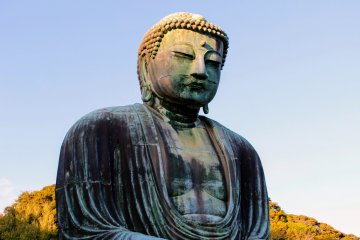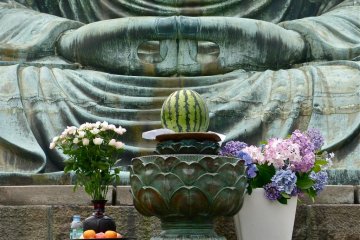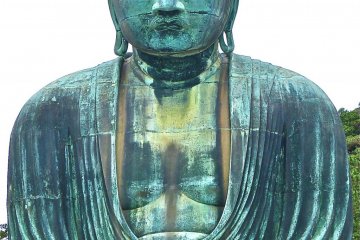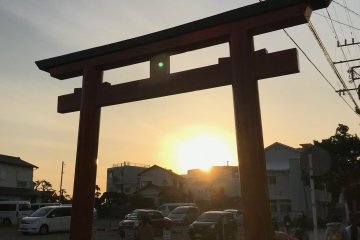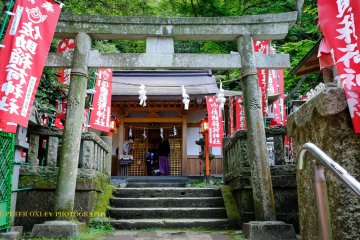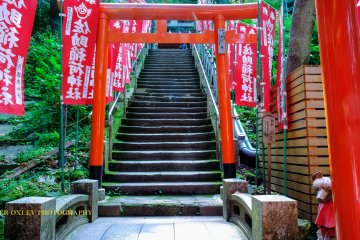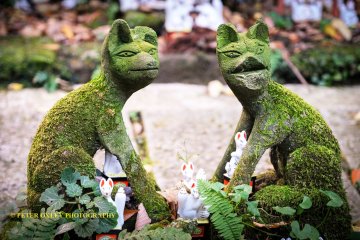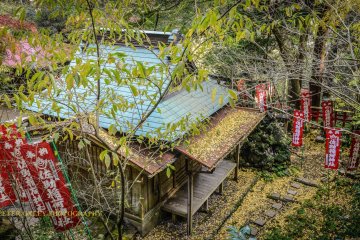It’s interesting that when we look back at history, we are used to seeing dates, facts, and events recorded in the archives of time and take them at face value, but how much of what happened in our ancient past is based on dreams, premonitions, superstitions, myths, and beliefs? Much more than you might think, especially in Japan.
Take, for example, Sasuke Inari Jinja and its neighbor, Zeniarai Benzaiten Ugafuku Jinja, which I shall feature in my next article. Both shrines were inspired by a dream, established at a specific geographical location that was deemed to be fortuitous, and today both offer the visitor or worshipper a means of seeking redemption or salvation from their current concerns.
Portentous Dream of Victory
Sasuke Inari Shrine was built in 1195 by Yoritomo no Minamoto, the first shogun, in the so-called Hidden Valley (kakurezato) of Kamakura (said to be the original dwelling place of the ninja), in gratitude for a dream that urged him to assemble an army which proved victorious in a battle he fought against the rival Taira clan in 1185. At the time of the dream, Yoritomo was but a young man living in exile on the Izu Peninsula.
There are several versions of the dream, but the most popular is that an old man from the Hidden Valley appeared to Yoritomo three nights in a row in the guise of a fox, instructing him how to defeat his enemies.
A Tunnel of Red Torii
To name the shrine after it was built, Yoritomo took the first character of his childhood name Sukedono and combined it with the character for help. Thus sasuke means helping Yoritomo.
When you go to the shrine, you will find it tucked away deep in the shade of a thickly wooded hillside, barely reached by the sun, accessed by stone steps lined in a tunnel created by 49 red torii. Alternatively, you can reach the shrine through the Kuzuharagaoka Daibutsu hiking trail located amongst the trees and shrubs at the back of the property.
At the top of the steps is the Haiden (prayer hall) and behind it the Honden where the god is enshrined.
Thousands of White Porcelain Foxes
The shrine is dedicated to thousands of stone and white porcelain foxes (byakko), messengers of the Shinto goddess of rice, Princess Ugatama. It is said that rice grew in her stomach and that she taught the Japanese how to grow rice (ina = rice, nari = grow). In addition to its food value, rice was essential in feudal times as a medium of exchange.
According to the ancient myth, the goddess came to Japan at the time of its creation amidst a harsh famine that had stricken the land. She descended from heaven riding a white fox, holding sheaves of grain in her hand; hence rice also came to signify wealth and prosperity.
Today the shrine is dedicated to the god of success in life, harvest, business, and academic achievement. In addition, the eleven-headed Kannon next to the shrine is said to bring good luck to marriages and relationships.
People also come to pray for the well-being of their sick or deceased pets. You can buy amulets related to pets, particularly dogs, and white porcelain foxes to take home or leave somewhere in the precincts as a talisman of good luck.
Little Village of Moss-covered Shrines
There are so many foxes embedded here by devotees that there is even a little village for them, complete with miniature moss-covered shrines. This pretty vignette is what many visitors come for, apart from offering a prayer to the gods. Many a photographer, amateur and professional alike, can be seen crouched on the ground shooting away with a high-end DSLR.
There are more than 30,000 Inari shrines in Japan, the main one being Fushimi Inari Taisha in Kyoto, a world-famous landmark much appreciated for its more than 1,000 vermillion torii. It was purportedly built on the site of Japan's first-ever inari shrine, which dates back to the year 711.
Shinto Belief of Rebirth and Renewal
Customarily, shrines or elements of them are demolished and rebuilt every 20 years in accordance with the Shinto belief of rebirth and renewal. Such is the case with Sasuke Inari Shrine: The Haiden has been replaced in the last couple of years and where the Honden once was is now an empty space, presumably awaiting reconstruction.
Sasuke Inari Shrine is a special place, unique to Kamakura. To paraphrase an ancient quote:
The hidden village is a separate land that is imagined to be deep in the mountains, in a mound hole, in the far upper stream of the river, and at the bottom of an abyss.
Magical, Mystical, and Otherworldly
The shrine and secluded grounds are permeated by a magical, mystical, and mysterious atmosphere, and can also feel ethereal, otherworldly, and sometimes downright eerie. I guess it all depends on your frame of mind and how willing you are to allow your imagination to wander. And, of course, there's the weather, the mists, the rustling of the trees, and the play of light and shadow. However the gods may deign to present the shrine on the day of your visit, Sasuke Inari Jinja is an experience not to be missed.



